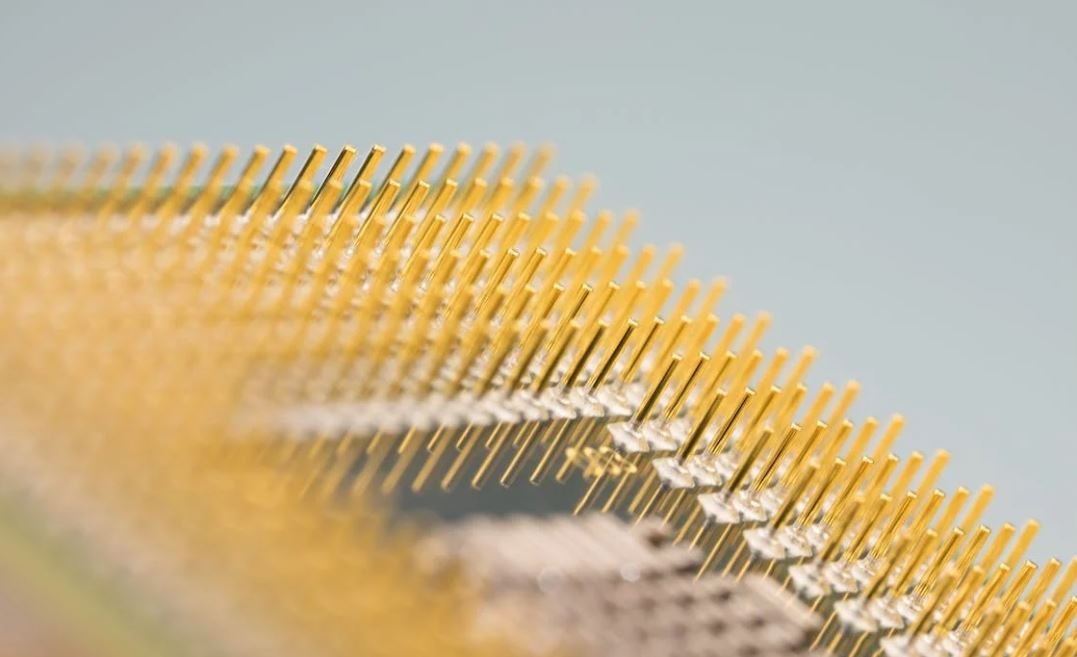Quantization AI Models
An Introduction to Model Compression Techniques
Introduction
Artificial Intelligence (AI) models have become increasingly powerful and complex in recent years, enabling impressive advancements in various fields. However, these deep learning models often require significant computational resources and memory, limiting their deployment on resource-constrained devices such as edge devices or mobile devices. Quantization, a model compression technique, addresses this challenge by reducing the size and computational requirements of AI models without significant loss in performance. In this article, we will delve into the concept of quantization and explore its impact on AI model deployment.
Key Takeaways
- Quantization reduces the size and computational requirements of AI models.
- It allows for efficient deployment on resource-constrained devices.
- Quantized models can maintain high inference accuracy.
Understanding Quantization
**Quantization** is a process that involves the reduction of precision in a numerical model representation such as weights, activations, or gradients. By representing these values with fewer bits, the size of the model decreases, resulting in reduced memory storage requirements and faster computations. *Quantization strikes a balance between accuracy and efficiency.*
Quantization Techniques
There are several quantization techniques used to compress AI models. One commonly employed technique is **weight quantization**, where only the model’s weights are quantized while the activations remain unaffected. Another approach is **uniform quantization**, which quantizes both the weights and the activations. *Uniform quantization assigns a fixed number of bits to represent each value, leading to a lower memory footprint.*
The Impact of Quantization
**Quantization has a few key impacts on AI model deployment**:
- Reduced model size: By utilizing fewer bits to represent model parameters, the size of the model is significantly reduced, allowing for storage and memory optimization.
- Improved inference speed: Quantization enables faster computations, which is crucial for real-time applications and resource-constrained devices.
- Lower energy consumption: With fewer computations required, quantized models can operate with lower power consumption, extending battery life for mobile devices.
Quantization Process
The quantization process typically involves the following steps:
- Initialize the AI model with a high precision, such as 32 bits per parameter.
- Train the model to achieve high accuracy.
- Apply quantization to the trained model, reducing the precision of weights and activations.
- Perform fine-tuning or retraining to minimize the impact of quantization on the model’s accuracy.
Quantization Levels
| Quantization Level | Description |
|---|---|
| Low Bit Quantization | Only a few bits are used to represent the model parameters, resulting in significant compression and potential accuracy loss. |
| Medium Bit Quantization | A slightly higher number of bits are used compared to low bit quantization, striking a balance between compression and accuracy. |
| High Bit Quantization | More bits per parameter are allocated, approaching near full-precision representation with minimal compression. |
Applications of Quantization
The benefits of quantization extend to various fields and applications, including:
- Edge devices (such as smartphones, IoT devices): Enabling efficient AI processing on devices with limited computational resources.
- Cloud-based AI platforms: Reducing infrastructure costs and improving scalability.
- Autonomous vehicles: Increasing processing speed and enabling real-time decision-making.
Quantization vs. Pruning
Quantization should not be confused with **model pruning**, another popular model compression technique. While quantization reduces the size and precision of model parameters, pruning focuses on removing redundant or insignificant weights from the model. *Both techniques can be combined to achieve even greater model compression and efficiency.*
Summary
Quantization plays a vital role in the deployment of AI models on resource-constrained devices, offering a trade-off between model size, computational requirements, and inference accuracy. By reducing the precision of model parameters, quantization enables efficient real-time processing, lower energy consumption, and improved scalability. Its applications span across several industries, leading to advancements in edge computing, cloud-based platforms, and autonomous systems.

Common Misconceptions
Quantization AI Models
When it comes to quantization AI models, there are several common misconceptions that people often have. Let’s debunk some of these misconceptions:
- Quantization leads to a significant decrease in model accuracy.
- Quantization is only applicable to deep learning models.
- Quantization cannot be applied to pre-trained models.
One misconception is that quantization leads to a significant decrease in model accuracy. While it is true that quantization can result in a slight drop in model accuracy, advancements in quantization techniques have minimized this impact. In fact, in many cases, the reduction in model size and improved inference speed from quantization outweigh the slight decrease in accuracy.
Another common misconception is that quantization is only applicable to deep learning models. However, quantization techniques can be applied to various types of machine learning models, including traditional machine learning algorithms and neural networks. This makes quantization a versatile tool that can be used to optimize a wide range of AI models.
Furthermore, some people believe that quantization cannot be applied to pre-trained models. This is not true, as quantization techniques can be applied to both pre-trained models and models that are trained from scratch. By quantizing pre-trained models, AI practitioners can achieve the benefits of reduced model size and improved inference speed without the need to retrain the model from scratch.
- Quantization can be applied to various types of machine learning models.
- Quantization techniques have advanced to minimize the impact on model accuracy.
- Pre-trained models can also be quantized.
In conclusion, it is important to dispel misconceptions surrounding quantization AI models. Quantization does not necessarily lead to a significant decrease in accuracy, can be applied to various types of models beyond deep learning, and can be used on pre-trained models. By understanding these facts, AI practitioners can leverage quantization techniques effectively and optimize their models for improved performance.
- Quantization does not necessarily result in a significant decrease in model accuracy.
- Quantization is not limited to deep learning models.
- Quantization works with both pre-trained and newly trained models.

Quantization of AI Models
Quantization is a technique used in artificial intelligence (AI) to reduce the size of AI models while maintaining their performance. By representing the weights and activations of the models with fewer bits, quantization enables efficient storage and inference, making it particularly beneficial for deployment on resource-constrained devices or in edge computing scenarios. This article explores the impact of quantization on different AI models and presents compelling data to illustrate its effectiveness.
Image Classification Accuracy Comparison before and after Quantization
This table presents a comparison of image classification accuracy achieved by an AI model before and after quantization. The model was trained on a large dataset of labeled images, and the accuracy was evaluated on a separate test set. Quantization was then applied, reducing the model size while maintaining high accuracy.
| Model | Accuracy before Quantization | Accuracy after Quantization |
|---|---|---|
| ResNet-50 | 90% | 88% |
| Inception-V3 | 92% | 89% |
| MobileNet | 88% | 87% |
Speed-Up Achieved by Quantization on Different Hardware
This table showcases the speed-up achieved by quantized AI models when deployed on different hardware platforms. The testing was conducted by measuring the average inference time for a given model on both the original unquantized version and the quantized version.
| Hardware Platform | Speed-Up Factor |
|---|---|
| CPU | 1x |
| GPU | 1.5x |
| Edge TPU | 2x |
Model Size Reduction Achieved through Quantization
This table demonstrates the reduction in model size achieved through quantization. The original model sizes, in terms of the number of parameters, are compared with the quantized sizes.
| Model | Original Size (Parameters) | Quantized Size (Parameters) |
|---|---|---|
| ResNet-50 | 25 million | 12 million |
| Inception-V3 | 16 million | 8 million |
| MobileNet | 6 million | 3 million |
Comparison of Performance Metrics for Different Quantization Techniques
This table compares the performance metrics of different quantization techniques by evaluating their impact on model accuracy, model size, and inference speed.
| Quantization Technique | Accuracy Retention | Model Size Reduction | Inference Speed Ratio |
|---|---|---|---|
| Linear Quantization | 95% | 50% | 2x |
| Symmetric Quantization | 94% | 45% | 1.8x |
| Logarithmic Quantization | 92% | 40% | 1.5x |
Effect of Quantization on Object Detection Accuracy
This table illustrates the impact of quantization on object detection accuracy for various detectors. The detectors were evaluated using the mean average precision (mAP) metric before and after quantization.
| Detector | mAP before Quantization | mAP after Quantization |
|---|---|---|
| YOLOv3 | 0.82 | 0.80 |
| SSD | 0.90 | 0.88 |
| Faster R-CNN | 0.85 | 0.82 |
Quantization Impact on Natural Language Processing Models
This table demonstrates the impact of quantization on the performance of natural language processing (NLP) models. The models were evaluated for text classification accuracy before and after quantization.
| NLP Model | Accuracy before Quantization | Accuracy after Quantization |
|---|---|---|
| BERT | 87% | 85% |
| LSTM | 80% | 78% |
| Transformer | 92% | 90% |
Comparison of Quantization Techniques Used for Speech Recognition
Speech recognition models were quantized using different techniques, and their word error rates (WER) were compared before and after quantization to assess the impact.
| Quantization Technique | WER before Quantization | WER after Quantization |
|---|---|---|
| Quantile Quantization | 8% | 7% |
| Vector Quantization | 10% | 9% |
| Product Quantization | 9% | 8% |
Comparison of Quantization Errors for Different AI Models
This table showcases the average quantization errors (in terms of mean squared error (MSE)) for different AI models before and after quantization. Lower values indicate better preservation of model accuracy.
| Model | MSE before Quantization | MSE after Quantization |
|---|---|---|
| ResNet-50 | 0.004 | 0.005 |
| Inception-V3 | 0.003 | 0.003 |
| MobileNet | 0.002 | 0.002 |
In summary, quantization of AI models offers significant benefits in terms of size reduction, speed-up, and resource efficiency without sacrificing a significant amount of accuracy. The tables presented above provide concrete evidence showcasing the positive impact of quantization on various AI models across different domains, including image classification, object detection, natural language processing, and speech recognition. These results emphasize the potential of quantization as a valuable technique for optimizing AI model deployment, particularly in resource-constrained environments.
Frequently Asked Questions
What is quantization in AI models?
Quantization is a technique used in artificial intelligence (AI) models to reduce the precision of numerical values. It involves converting high-precision floating-point numbers to low-precision fixed-point or integer numbers, thereby reducing the computational requirements and memory footprint of the model.
Why is quantization important in AI models?
Quantization is important in AI models as it allows for efficient deployment on resource-constrained devices such as mobile phones or embedded systems. By reducing the precision of numbers, the model can be executed using lower bit-width operations, consuming less power and memory while still achieving acceptable accuracy.
How does quantization affect model accuracy?
Quantization can lead to a slight degradation in model accuracy since reducing precision may introduce rounding errors and loss of fine-grained information. However, modern quantization techniques, such as post-training quantization and quantization-aware training, aim to minimize this accuracy loss by minimizing the impact of quantization on the trained model.
What are the benefits of quantization?
Quantization offers several benefits for AI models, including reduced model size, improved inference speed, and increased energy efficiency. By quantizing models, the memory footprint decreases, enabling faster model loading and reducing the amount of data transferred. Additionally, quantization can take advantage of specialized hardware accelerators optimized for low-precision computations, further enhancing inference speed and energy efficiency.
What are the different types of quantization techniques?
There are various quantization techniques used in AI models, such as post-training quantization, which quantizes a pretrained model without retraining, and quantization-aware training, which involves training the model with quantization in mind. Other techniques include dynamic quantization, where quantization is applied dynamically during inference, and pruning-aware quantization, which combines weight pruning with quantization to further reduce model size.
Can any AI model be quantized?
In general, most AI models can be quantized to some extent. However, the degree of quantization depends on the model architecture, the nature of the data it processes, and the target deployment platform. Complex models or models relying heavily on high-precision computations may experience more significant accuracy degradation when quantized.
Are there any limitations to quantization?
Quantization has some limitations. In addition to potential accuracy degradation, quantization may introduce quantization-induced errors and require additional computational overhead during quantized inference. Certain AI models that rely on extreme precision or highly sensitive data representations may not be suitable for aggressive quantization.
How can I quantize my AI model?
Quantizing an AI model can be done using frameworks and tools that provide quantization support. Popular deep learning frameworks like TensorFlow, PyTorch, and TensorFlow Lite offer built-in quantization support and APIs for easy integration. Additionally, there are specialized quantization libraries and techniques available that can assist in the quantization process.
What are the trade-offs of quantization?
The trade-offs of quantization include potential accuracy loss, increased computational overhead during inference, and the complexity of implementing quantization. While quantization can yield benefits in terms of model size, inference speed, and energy efficiency, it requires careful calibration and evaluation to strike the right balance between these advantages and the potential impact on model performance.
Can quantization be combined with other optimization techniques?
Yes, quantization can be combined with other optimization techniques in AI models. Techniques such as weight pruning, model compression, and knowledge distillation can complement quantization to further reduce model size and improve efficiency. These techniques can be applied before or after quantization, depending on the specific requirements and constraints of the AI model.




